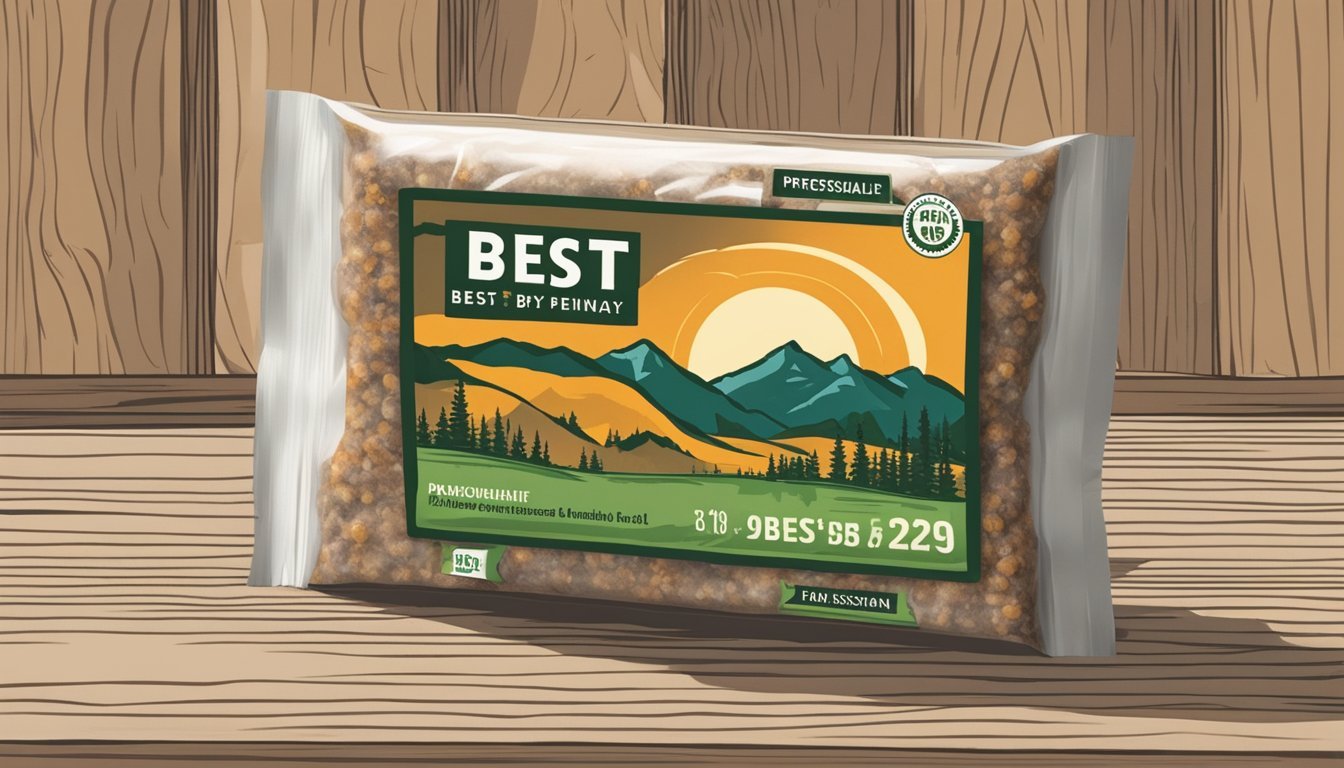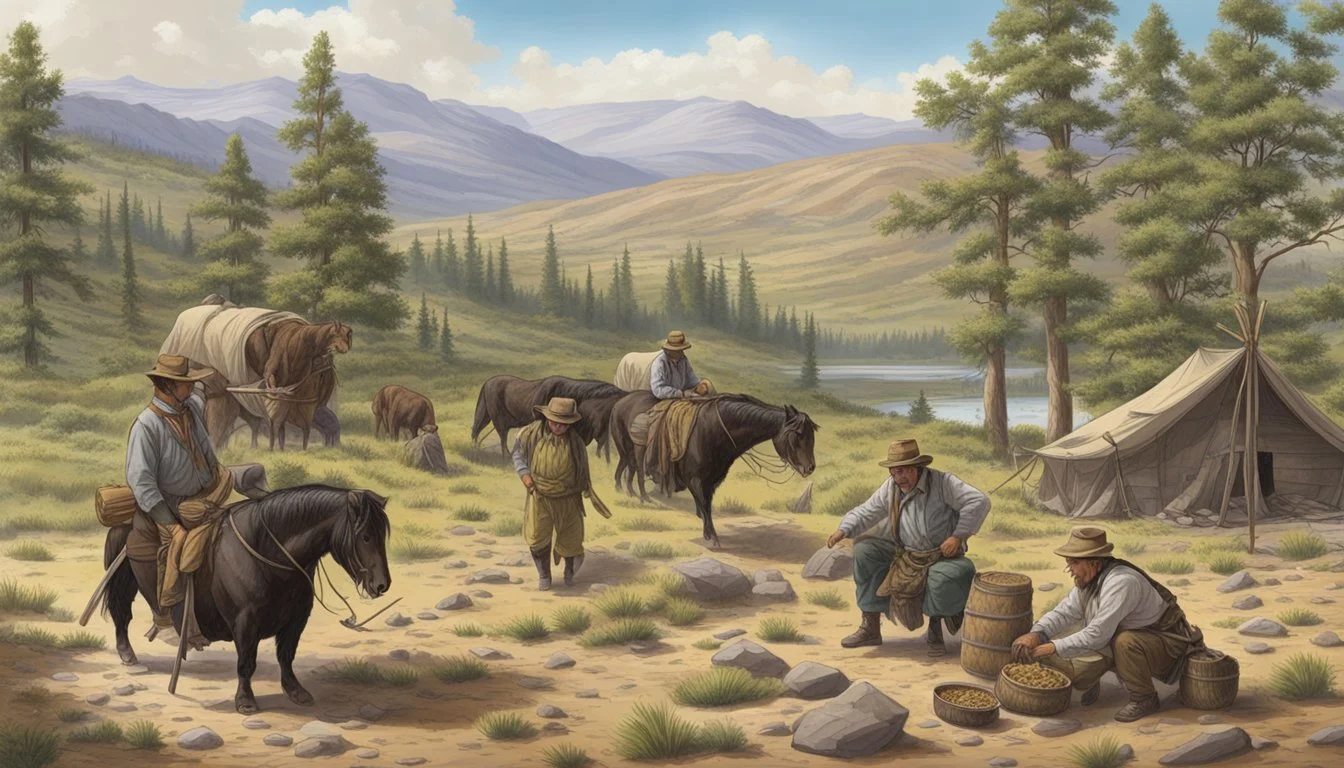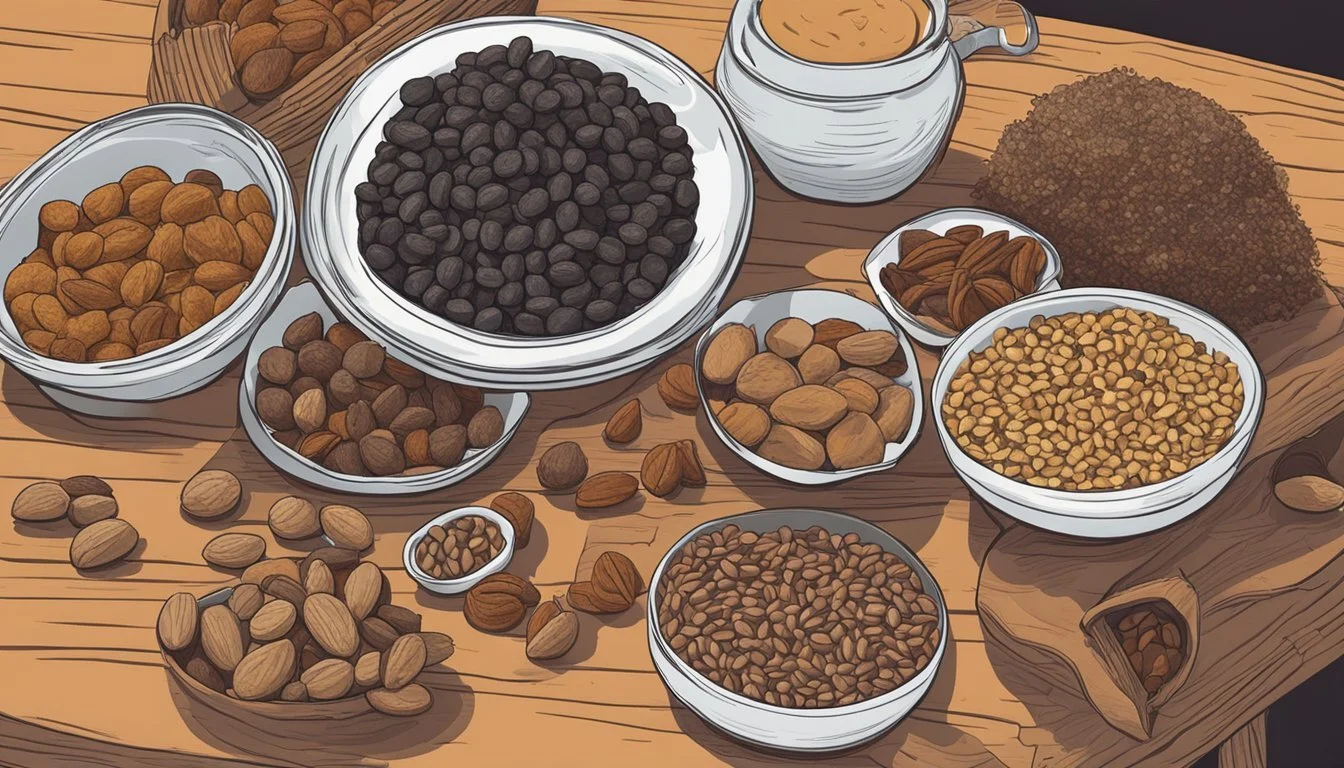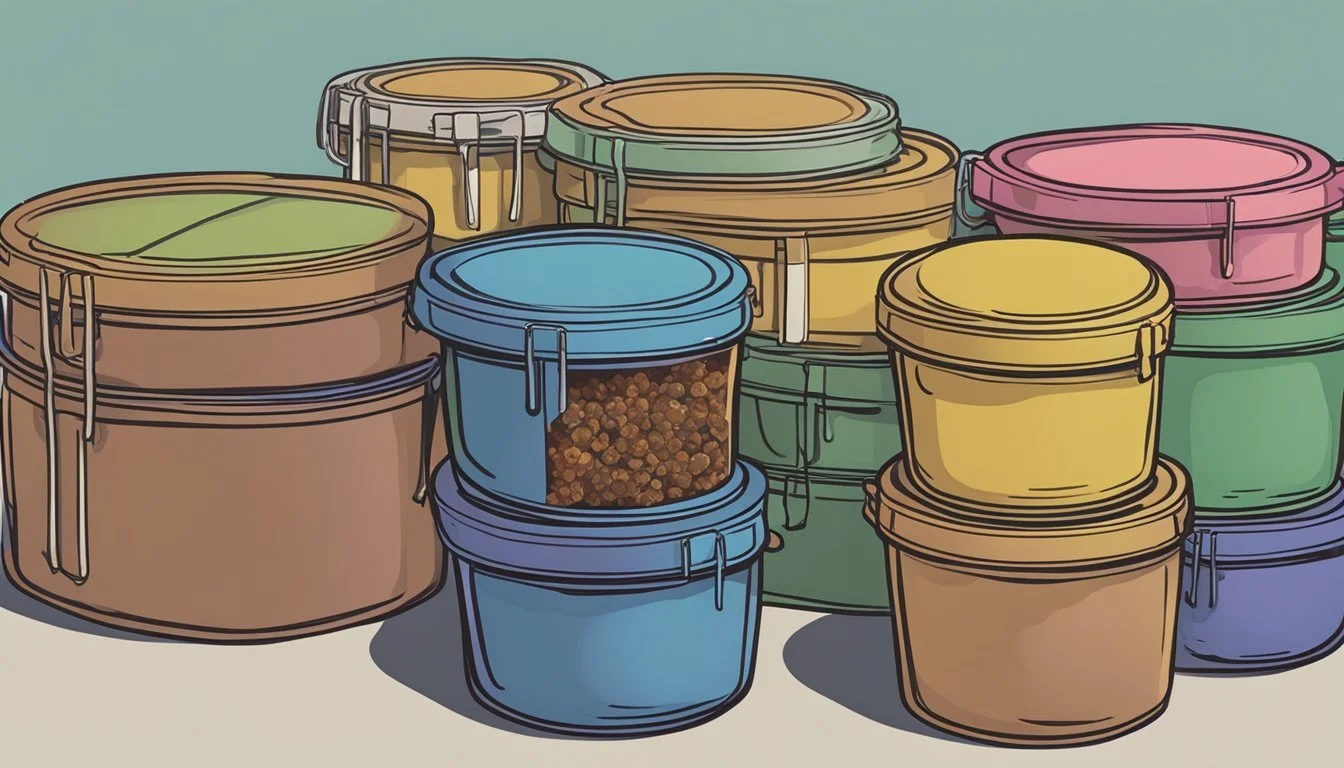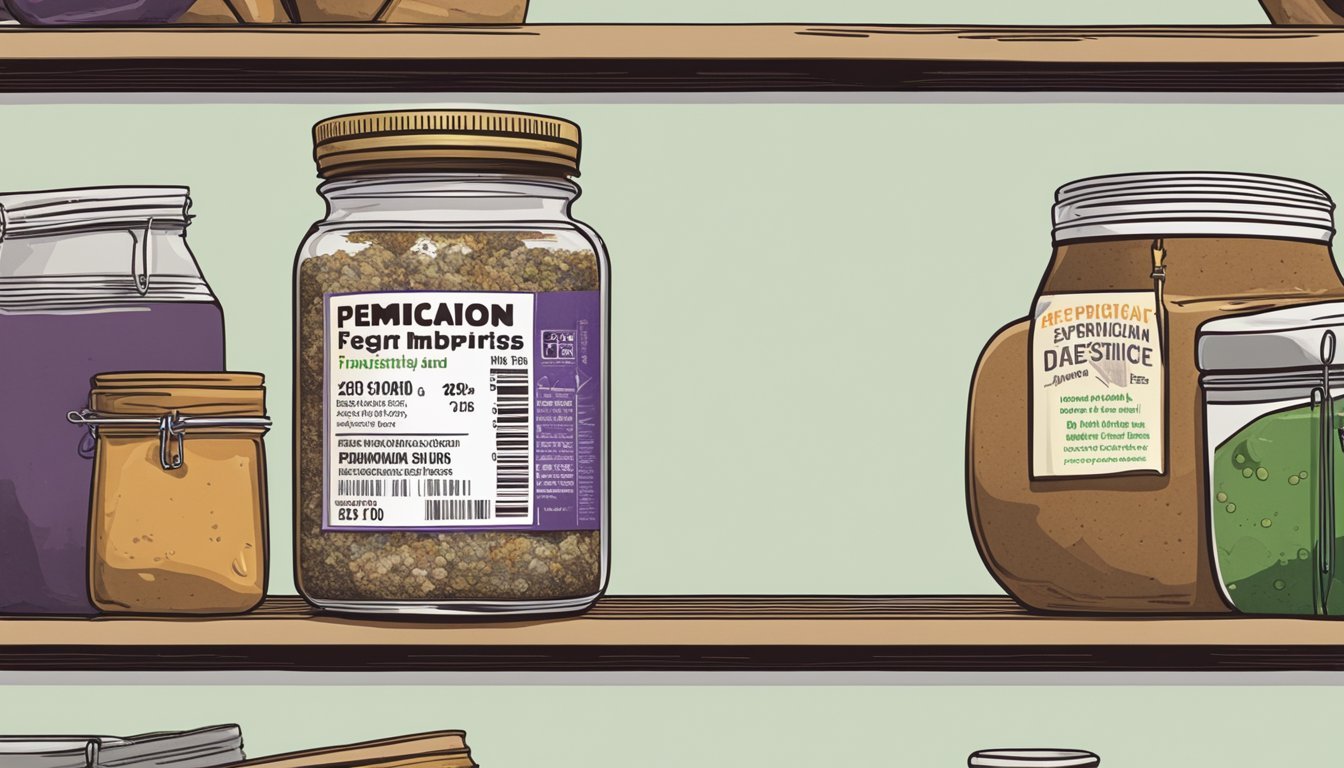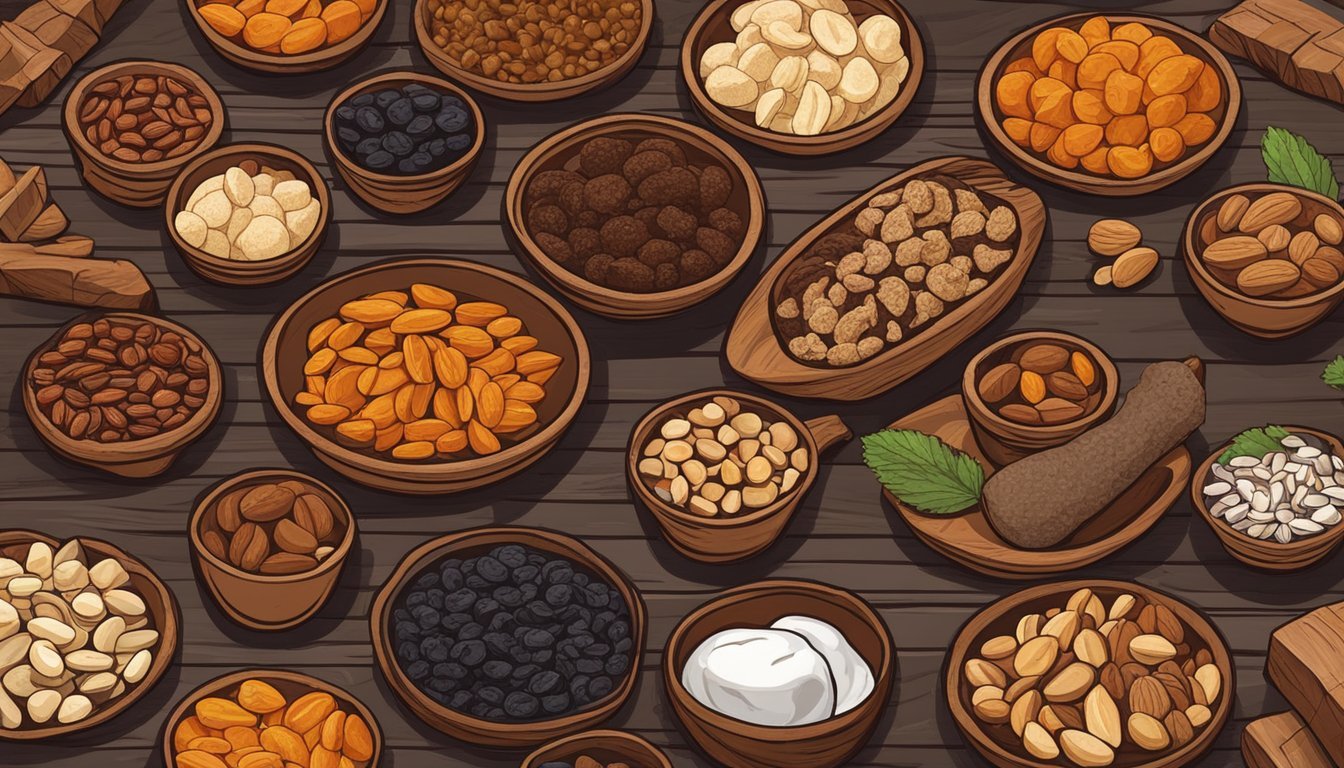How Long Does Pemmican Last?
Uncovering Its Shelf Life and Storage Tips
Pemmican, a compact and high-energy mixture of dried meat, fat, and sometimes fruits, has long been valued as a survival food with an impressively long shelf life. Developed by the Native Americans of North America, this nutrient-dense food became a staple for survival in harsh environments. Its durability and portability made it ideal for extended journeys and situations where fresh food was not available.
The longevity of pemmican is remarkable, with proper preparation and storage significantly extending its shelf life. When stored at room temperature, pemmican can last between 3 to 5 years, making it a reliable source of sustenance for extended periods without refrigeration. The durability of pemmican only multiplies when preserved in a freezer, with a potential shelf life of over 20 years, a testament to its stability as a survival food.
The key factors contributing to pemmican's long shelf life include the quality of meat, the precise method of preparation, and the storage conditions. By ensuring the meat is ground to a fine powder and the fat is rendered and strained properly, the resulting mixture, when kept in an airtight and dry environment, can retain its quality for years. Vacuum sealing further enhances its shelf life, making pemmican unparalleled in terms of its preservation qualities among survival foods.
Historical Significance
Pemmican is not only a high-energy food but it also played a significant role in the cultural and military history of North America. This durable staple supported the sustenance of indigenous populations and the efforts of armies during long campaigns.
Pemmican in Cultural Context
Pemmican was integral to the survival of Native North Americans, particularly those residing in areas where fresh food was scarce for long periods. It was often made using bison meat, although elk and deer were also common. The involvement of pemmican in the fur trade is notable; it served as a reliable source of nutrition for traders and explorers during long and arduous journeys across the continent.
Pemmican in Military Use
In times of war, pemmican's longevity and nutrient density made it a key ration for military expeditions. The U.S. Military found pemmican to be a pragmatic food source during extensive operations, including World War I. Its ability to withstand various storage conditions without spoilage vastly supported the military's logistical challenges during war and peacetime maneuvers.
Pemmican Composition
The composition of pemmican revolves around its two primary ingredients: lean dried meat and rendered animal fat, combined in a dense, nutrient-rich ratio that provides long-lasting energy and sustenance.
Primary Ingredients
Meat: Traditionally, pemmican is made using lean, dried meat such as beef, which is ground to a fine powder. The meat is the main source of protein.
Fat: The fat used in pemmican, typically tallow or suet, binds the meat powder into a solid form and provides essential calories and fats for energy.
Nutritional Profile
Protein: Ample due to its high meat content, pemmican is rich in protein, essential for muscle repair and maintenance.
Calories: The combination of meat and fat makes pemmican calorie-dense, which is paramount for energy-intensive activities.
Iron and Vitamins: Depending on the meat used, pemmican can be a good source of iron and certain B-vitamins.
Additions and Variations
Dried Berries: Some recipes include dried berries like blueberries or cranberries for additional flavor, vitamins, and antioxidants.
Nuts: Occasionally, nuts may be added for texture and extra nutrition, introducing more variety in the fatty acid profile.
Variations: Different meats and fats can be used based on availability and preference, altering the taste and nutritional values.
Making Pemmican
Making pemmican involves a process that combines dried meat, fat, and sometimes dried fruits into a dense, energy-rich food source. Traditionally, pemmican's simple, preservative-free recipe provided essential nutrition and long-lasting sustenance.
Traditional Recipe
The traditional pemmican recipe consists of lean dried meat and melted animal fat in roughly a 1:1 ratio. Commonly used meats include bison, moose, elk, deer, and caribou. The dried meat is first pounded into a fine powder before being combined with the liquid fat. Dried fruits such as blueberries or cranberries might be added for flavor and additional nutrients.
Modern Adaptations
Modern adaptations of pemmican may incorporate a variety of meats like chicken or rabbit and additional elements such as honey for sweetness, spices, and garlic powder for enhanced taste. Given the flexibility of the basic pemmican recipe, individuals have the freedom to craft flavors suited to their palates while maintaining the food's storability and nutrient density.
Preparation Process
To prepare pemmican, one needs a food processor to grind the dried meat into a fine consistency and a dehydrator to adequately dry the meat and any fruits used. Once the meat is powdered and the fat is rendered and strained, they are mixed thoroughly. The mixture is then shaped and allowed to solidify. The entire method of preparation is critical for achieving a long shelf life, as correctly dried and combined ingredients prevent spoilage.
The process of making pemcican remains a reliable technique for creating a nutritious, long-lasting food supply that stands the test of time without refrigeration.
Storage and Preservation
Ensuring that pemmican remains edible over an extended period hinges on proper storage and preservation methods. The longevity of this traditional food can be maximized through specific storage conditions and advanced preservation techniques.
Optimal Storage Conditions
For pemmican to retain its quality over time, storage conditions should include a cool, dark, and dry environment. It's generally recognized that room temperature, if consistently cool, can maintain pemmican for 3 to 5 years. Conditions such as a cellar or pantry are ideal as they typically offer low light and stable temperatures. Humidity should be kept to a minimum, so maintaining low moisture levels is crucial.
Temperature: Best kept in cool conditions
Humidity: Dry environment is crucial
Light: Minimize exposure
Long-Term Storage Techniques
For long-term preservation extending beyond several years, specific storage techniques are recommended. Pemmican should be stored in an airtight container to protect it from environmental exposure. Vacuum-sealed bags are particularly effective for this purpose, providing an environment devoid of moisture and air which could lead to spoilage.
If pemmican is to be stored for decades, using a freezer can extend its shelf life significantly. Freezer storage has been known to preserve pemmican for over 20 years. Despite the extended longevity, attention should be paid to the thawing process to prevent any impact on its texture and flavor. For best preservation:
Seal pemmican in vacuum-sealed bags or airtight containers
Store in a freezer for maximal shelf-life extension
Protect from temperature fluctuations during freezing and thawing
Pemmican Longevity
Pemmican, known for its impressive shelf life, can remain edible for many years under the right conditions. The longevity of pemmican largely hinges on factors like moisture content and storage temperature.
Factors Affecting Shelf Life
Moisture: Pemmican's shelf life is significantly impacted by its moisture content. The lower the moisture, the less hospitable the environment for bacteria and other microorganisms that can cause spoilage. Ensuring pemmican is thoroughly dried before storage is essential for longevity.
Temperature: Storage temperature plays a crucial role in preserving pemmican. Cooler temperatures can remarkably extend its durability, with freezing conditions allowing for the longest preservation; however, repeated thawing and freezing can affect its texture and flavor.
Room Temperature: At room temperature, pemmican can last from 3 to 5 years if stored in airtight conditions.
Refrigerated/Frozen: In the refrigerator or freezer, pemmican can last for over 20 years. It is important to minimize temperature fluctuations to prevent condensation and bacterial growth.
Bacteria and Spoilage: Pemmican that is properly prepared and stored will resist bacteria and spoilage due to its low moisture and high-fat content. It is essential to maintain sanitary conditions during the preparation process to avoid introducing contaminants that could reduce its shelf life.
Properly vacuum-sealed pemmican can maximize shelf life by creating an environment less prone to oxidation and bacterial growth.
By closely monitoring these factors, pemmican can be a reliable and long-lasting food source, with a storied history of sustaining individuals for extended periods, especially in survival situations.
Utilization of Pemmican
Pemmican is highly regarded for its dense nutritional value and long shelf life, making it a staple survival food that can be utilized in various diets and emergency situations.
As a Survival Ration
Pemmican serves as an emergency ration due to its rich content of proteins and fats, providing sustained energy. Given its origin as a survival superfood developed by indigenous peoples of North America, preppers and survival enthusiasts often include pemmican in their emergency supplies. Its resilience to spoilage allows pemmican to be stored effectively for years, making it an ideal survival tool in extreme conditions.
Shelf life: 3-5 years at room temperature; 20+ years when stored in a freezer
Utility: Compact and easy to carry; does not require refrigeration
When vacuum sealed, pemmican's longevity increases, contributing to its reputation as a survival essential among those preparing for uncertainty.
In Modern Diets
Despite its roots as a traditional food, pemmican has found a place in modern diets, often likened to a protein bar. The food's nutritional profile aligns with contemporary pursuits for high-protein, low-carb foods, placing it within the category of a superfood for some.
Form: Often consumed in bar form for convenience
Adaptability: Can be incorporated into modern meals or eaten as is
While not as common in everyday diets, its adoption by outdoor enthusiasts and those seeking nutrient-dense, portable food options underscores pemmican's versatility beyond just survival scenarios.
Common Questions
When discussing the longevity of pemmican, understanding its shelf life expectancy and how to identify spoilage are vital to ensure safe consumption.
Shelf Life Expectancy
Pemmican is renowned for its impressive shelf life. If stored correctly, it can remain edible for significantly extended periods. Here's a summary of what to expect under various conditions:
Room Temperature: 3 to 5 years
Refrigerated: Greater longevity; exact duration can vary
Freezer Storage: Can last for over 20 years
Storage Conditions also play an essential role:
For optimal preservation, pemmican should be kept in a cool, dry place, away from direct sunlight.
Vacuum sealing can contribute to extending the shelf life by creating an oxygen-depleted environment.
Signs of Spoilage
Pemmican can spoil if exposed to unfavorable conditions, which can lead to the growth of bacteria. One should be mindful of:
Visual Changes: Mold or discoloration indicates spoilage.
Texture: Any unexpected softness or change could be a warning sign.
Odor: A sour or off smell is a clear indicator that pemmican has gone bad.
If pemmican shows any of these signs, it should not be consumed.
Pemmican in Different Climates
Pemmican's durability largely depends on the climate in which it is stored. Temperature and humidity play crucial roles in preservation.
Warm Regions
In warm regions, the shelf life of pemmican can be considerably shorter due to higher temperatures. Room temperature storage in these areas often leads to:
Increased risk of spoilage due to heat and moisture.
A potential reduced shelf life of 3-5 years.
To extend its shelf life in warm climates, it is advised to store pemmican in a cellar, where temperatures are cooler and more stable.
Cold Regions
In contrast, cold regions offer an optimal environment for extending pemmican's shelf life. Conditions such as a consistently low freeze point contribute to:
Pemmican's longevity, potentially allowing it to last 20+ years when stored in a freezer.
In the absence of freezers, a cellar or similarly cool storage can aid in long-term preservation, though not as long as freezing would permit.
When anticipating a long haul, proper packaging and storage in cold conditions are essential to maintain pemmican's edibility and nutritional value.
Pemmican Varieties
In the realm of pemmican, variety stems from the selection of meats, the addition of fruits, and the type of fats used in production. Each element influences the taste, texture, and shelf life of the final product.
Meat Selection
The choice of meat in pemmican primarily includes beef jerky or fish, with beef being the most traditional. It should be lean, thoroughly dried, and ground to a fine consistency. Quality preparation ensures longevity, with beef pemmican lasting up to 5 years under optimal conditions. Fish, while less common, offers a unique taste and similar shelf life when prepared properly.
Fruit Inclusions
Fruits are often added to pemmican for flavor and additional nutrients. Common choices include:
Saskatoon berries
Cranberries
Blueberries
Cherries
These berries complement the savory meat while providing subtle sweetness and antioxidants. The inclusion of fruits does not typically compromise the extended shelf life of pemmican.
Fat Types
The fat used in pemmican is rendered fat or tallow. It acts as a binding agent for the meat and fruit, and its purity is imperative for preventing spoilage. Rendered fat should be clear and free from impurities to enhance preservation. The fat content is crucial, as it solidifies the mixture and contributes significantly to the pemmican's energy density.
Conclusion
Pemmican is renowned for its impressive shelf life, which can span from several years to multiple decades under appropriate storage conditions. Below is a summary of its longevity based on various environments:
Freezer Storage: Pemmican can last beyond 20 years if continuously kept frozen.
Room Temperature: When stored at room temperature, its lifespan ranges between 3 to 5 years.
Vacuum Sealed: A vacuum-sealed package can enhance pemmican's durability, aligning with freezer storage longevity.
It is critical to note that these durations assume proper preparation and storage methods. The quality of the meat used and the meticulous removal of fats during preparation also contribute significantly to pemmican's shelf stability. Pemmican's endurance makes it a practical option for long-term food storage, aligning with its historical use as a reliable food source for indigenous peoples and explorers.
In conclusion, when pemmican is carefully crafted and stored, individuals can rely on it as a durable food supply. It's a testament to pemmican's historical role as a sustenance staple and its continued relevance in modern emergency preparedness and survival scenarios.

